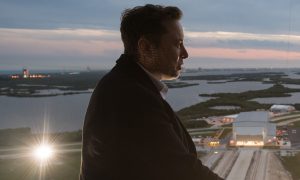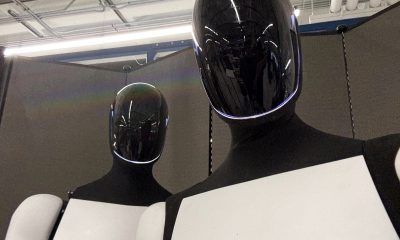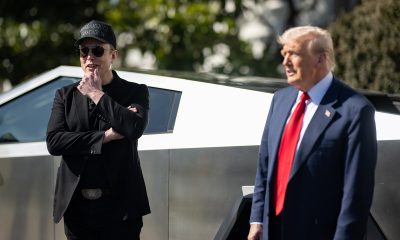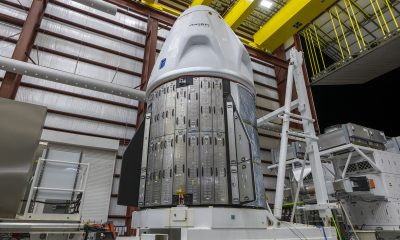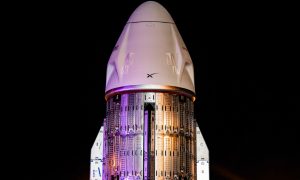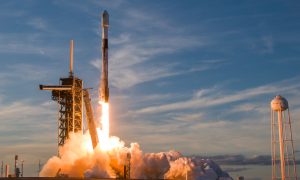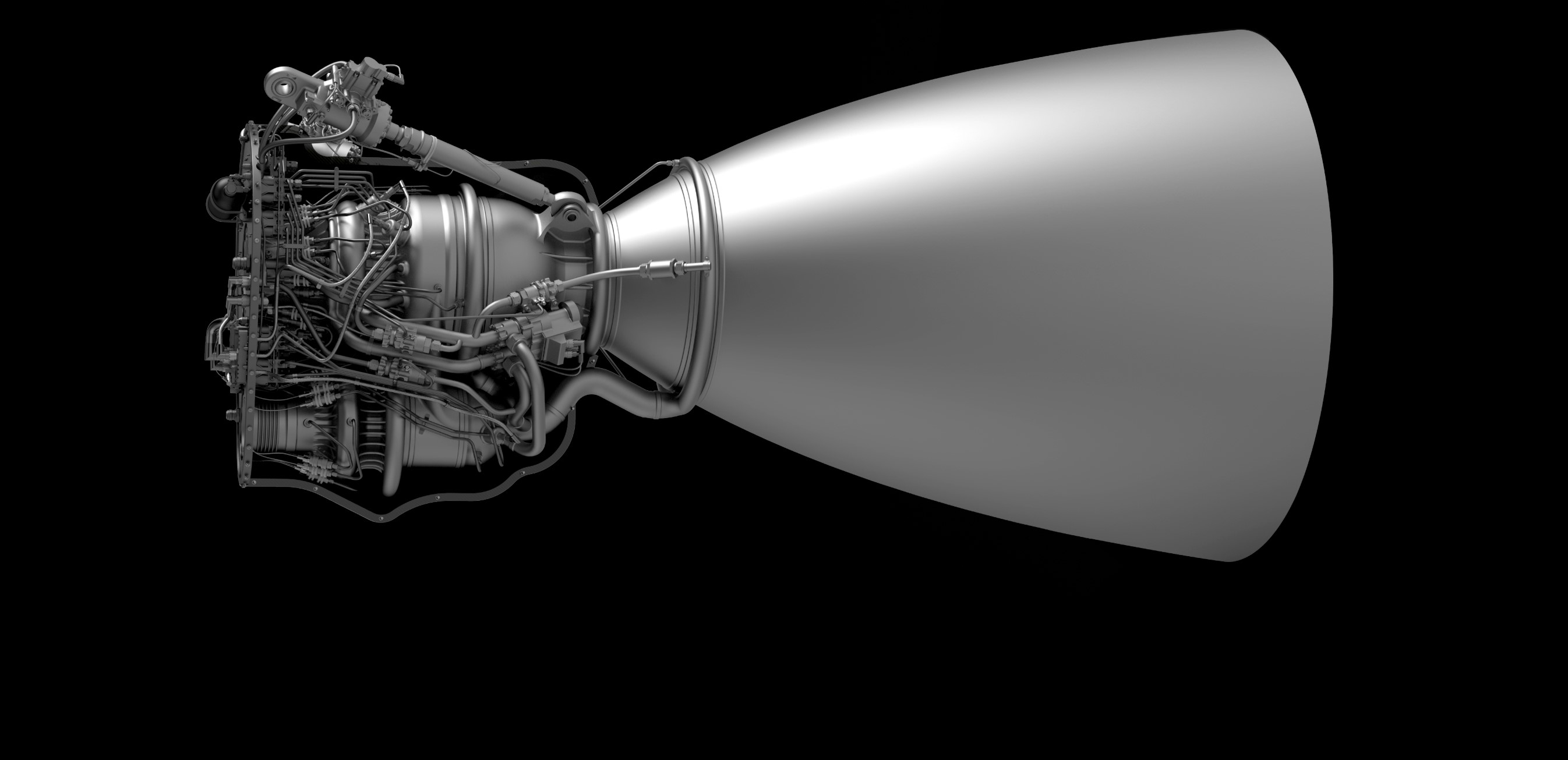

News
SpaceX’s Starship Raptor Vacuum engine plans laid out by CEO Elon Musk
Elon Musk says that SpaceX Starship engine upgrades are on track to begin static fire tests of a Raptor Vacuum variant as few as a “couple months” from now.
Designed to enable more efficient performance in thin atmosphere or vacuum, Musk admitted that the first version(s) of Raptor Vacuum (RVac) will likely be a compromise between efficiency and speed of development. Nevertheless, the faster SpaceX can prepare Raptor Vacuum for flight, the easier it will be for Starship to begin serious (sub)orbital flight tests.
As it turns out, SpaceX’s first and only official render of Raptor – published in September 2016 – showed the engine’s vacuum-optimized variant. In the years since, CEO Elon Musk has vacillated between keeping the vacuum engines as a central Starship feature and simply replacing them with regular sea level Raptors to expedite the spacecraft’s debut. The 2016 and 2017 vehicles featured a mixture of vacuum and sea-level engines, whereas Musk revealed a vehicle with sea-level engines only in 2018.
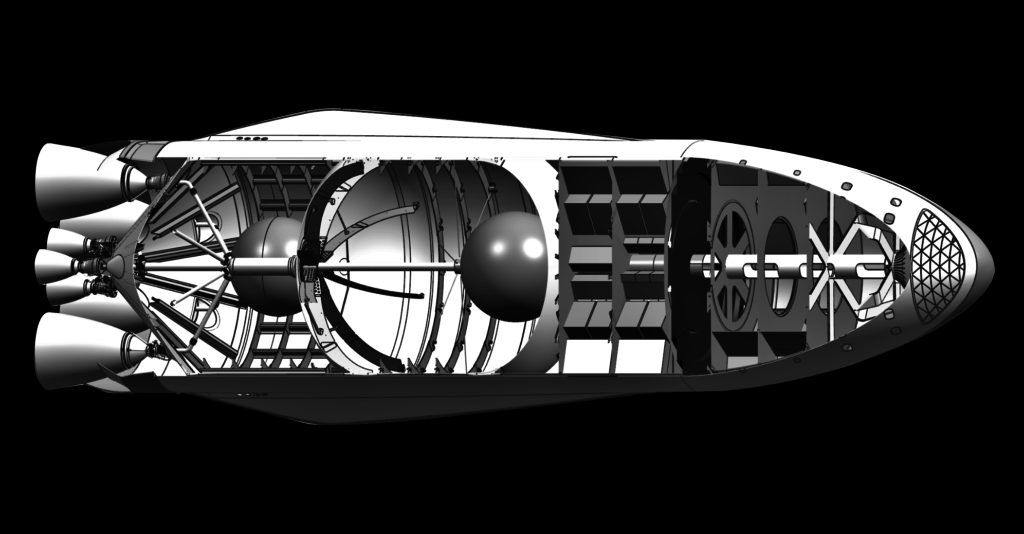
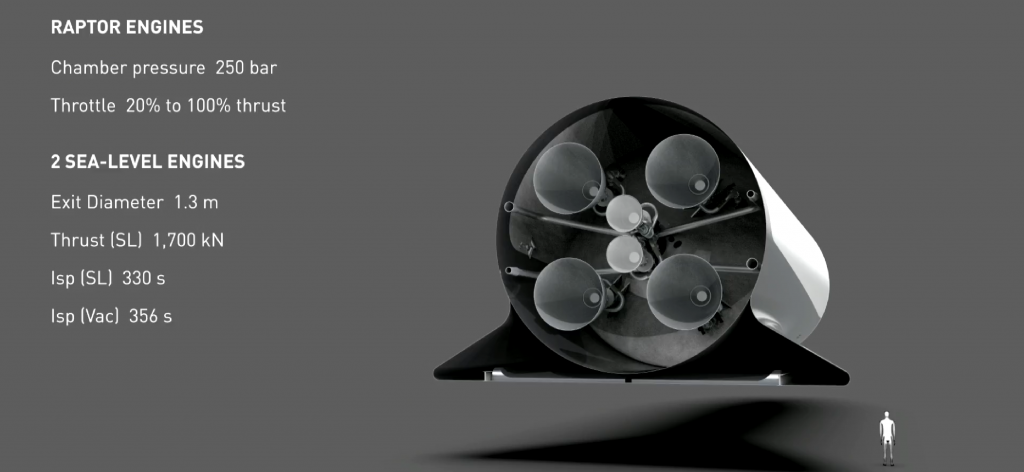
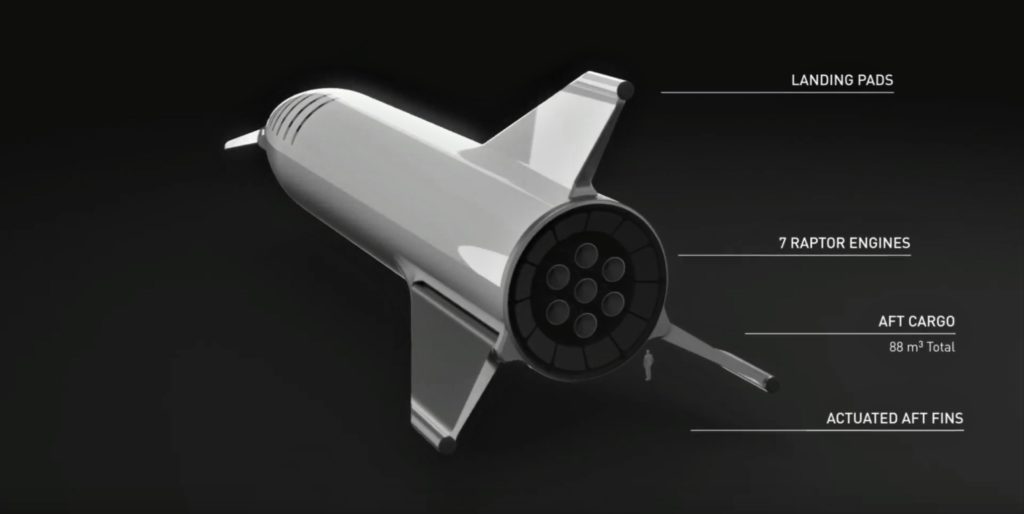
Perhaps less than a month after Musk’s September 2018 presentation, the SpaceX CEO made the decision to radically redesign the vehicle – newly christened Starship and Super Heavy – by moving from a carbon composite aerostructure to stainless steel. At first, the seven SL Raptors remained a part of the design, but Musk took to Twitter in 2019 to indicate that SpaceX had changed gears again and had reprioritized Raptor Vacuum development.
This came as a bit of surprise and it should go without saying that there’s a significant chance that Musk/SpaceX will oscillate in the opposite direction once again before Raptor Vacuum is actually ready for flight. This time, though, Musk has sketched out a development schedule and strategy that suggests SpaceX is much more serious this time.
Most notably, Musk claims that the first Raptor Vacuum prototype could be ready for static fire testing just a “couple months” from now, an immensely ambitious schedule for any large liquid rocket engine development program. Nevertheless, Musk did indicate that the “V1.0” Raptor Vacuum design would be significantly compromised and “suboptimal”, an intentional decision to prioritize the engine’s “speed of development”.
Even then, Musk believes that the first variant – featuring a shortened bell nozzle – could still be up to 12% more efficient than sea level Raptors and thus already 70-80% of the way to the physical limit of methane-oxygen rocket efficiency.
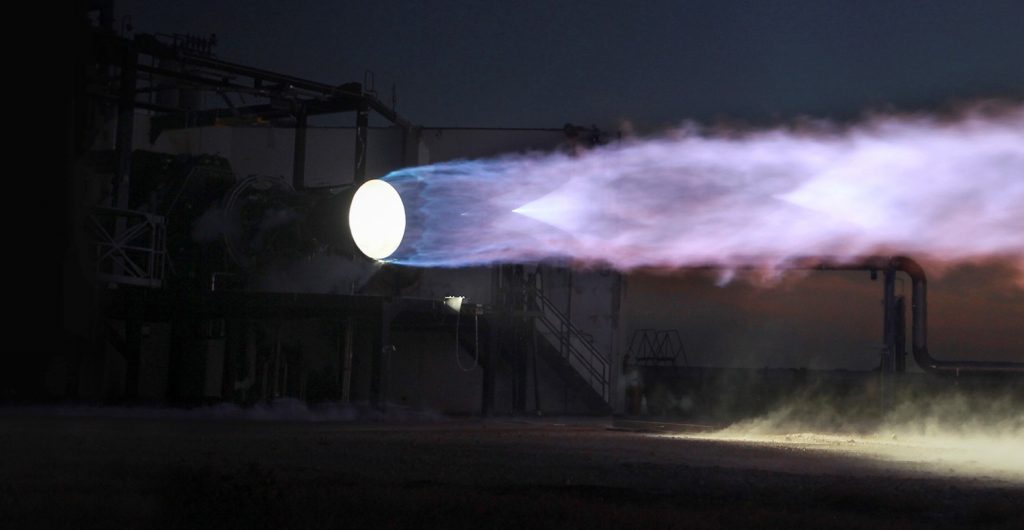
On a positive note, shrinking V1.0 Raptor Vacuum’s nozzle a bit from its nominal length will likely mean that SpaceX can static fire fully-integrated engines at its McGregor, TX test facilities, critical for speedy development. If not, the company has experience with alternatives through Merlin Vacuum, which can only be tested on the ground with its lengthy nozzle detached. This method just makes it dramatically harder to optimize a vacuum nozzle design, as full-scale, flight-like testing is nearly impossible if a given vacuum engine can’t be tested on the ground with said nozzle installed.
Vacuum engines need such large and unwieldy nozzles in order to make them as efficient as possible. In a very simplistic sense, a rocket engine nozzle directs the flow of superheated, ultrafast gases in order to squeeze as much momentum transfer as possible out of available propellant. The lower the pressure of the surrounding atmosphere is, the more those gases will expand immediately after leaving the nozzle – giant vacuum nozzles simply try to harness the additional momentum available from that extra expansion. This is why rocket exhausts appear to spread and thin out as launch vehicles reach higher and higher altitudes.
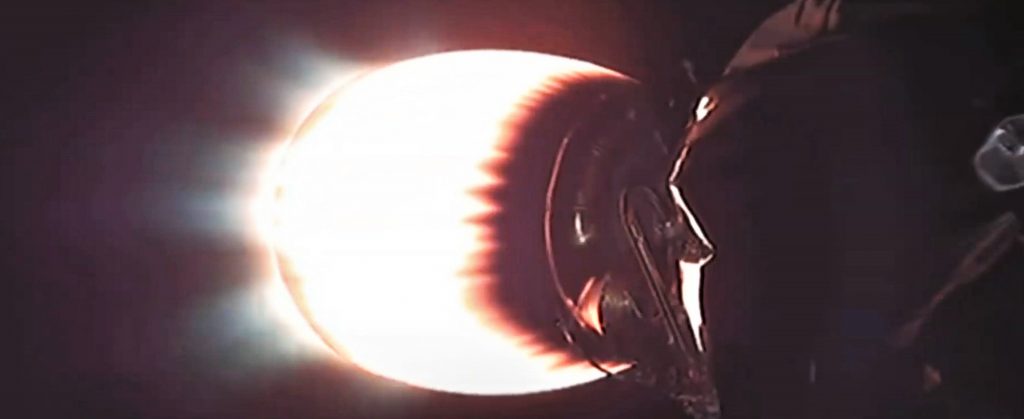
In this sense, the perfect theoretical vacuum nozzle is quite literally infinitely long. The job of vacuum rocket engineers is to find the perfect balance between that impractical theoretical perfection and the limits of real-world materials and dynamics. In theory, SpaceX’s sea-level Raptor engines have already been designed to operate in vacuum conditions, while the engine’s closed-cycle design and regeneratively (i.e. propellant) cooled nozzle should apply well to a vacuum design.
If SpaceX is lucky, there will be few roadblocks in the way of simply lengthening a SL Raptor-style nozzle and calling it a day, in which case it would be impressive but not all that surprising if SpaceX is actually able to begin RVac testing before the end of 2019. Once a rough V1.0 engine is in place, the process of optimizing efficiency can be done slowly and methodically, all while exploiting an unprecedented wealth of data from flight and orbit-tested Raptor Vacuum engines.
Check out Teslarati’s Marketplace! We offer Tesla accessories, including for the Tesla Cybertruck and Tesla Model 3.
News
X launches Community Notes feature to bridge diverse perspectives
X’s new pilot expands Community Notes by spotlighting posts liked across ideological divides. Can social media finally bring people together?
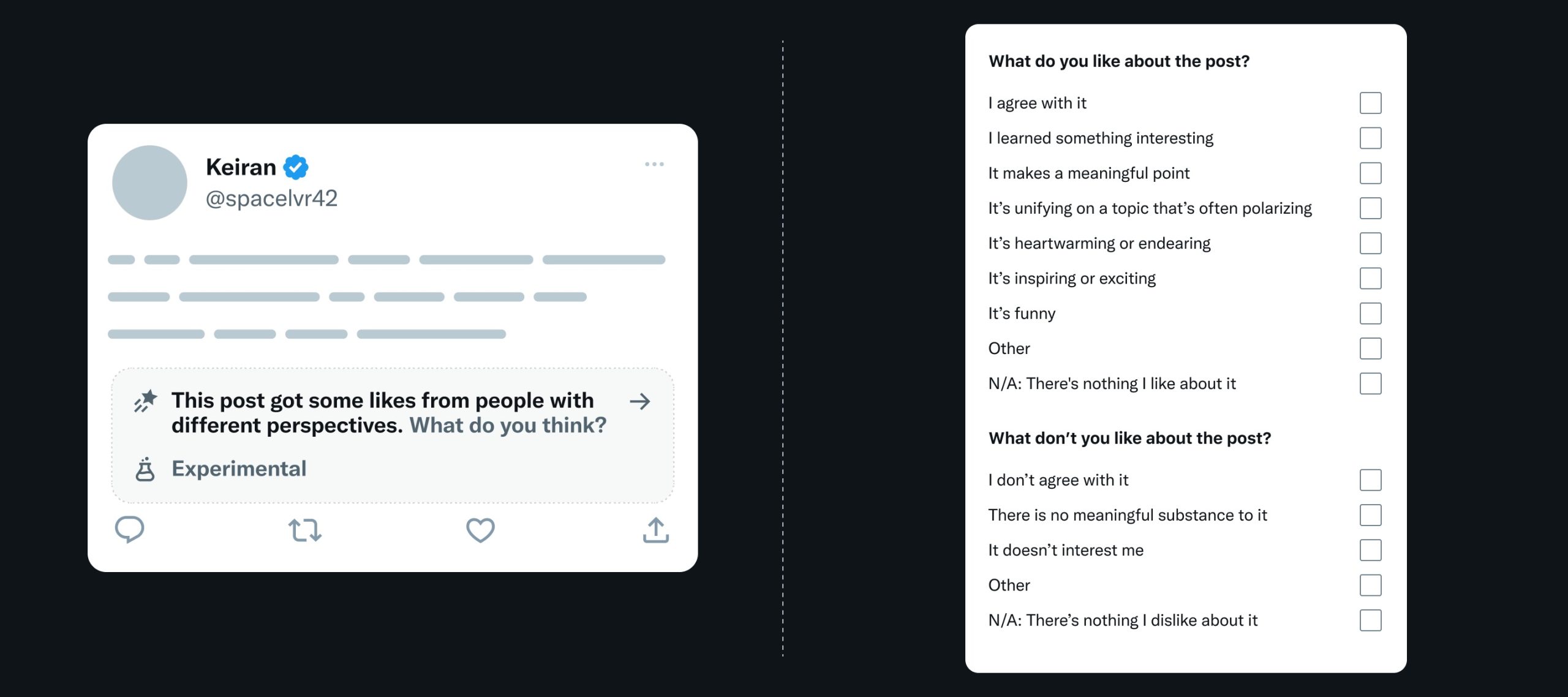
X’s Community Notes pilot seeks to bridge perspectives by introducing an experimental feature to identify posts liked by diverse viewpoints. Announced by Elon Musk’s X, the initiative builds on the success of Community Notes, which highlights agreement among users who typically disagree.
Starting June 05, a select group of Community Notes contributors, representing a broad spectrum of perspectives, will encounter a new callout within the platform. “The callout shows based on early and limited Like signals on the post,” X explained.
Contributors can rate and provide feedback on these posts, aiding the development of an open-source algorithm to identify content that resonates across differing viewpoints. The pilot aims to uncover ideas, insights, and opinions that foster unity, addressing the often-divided nature of online discourse.
“People often feel the world is divided, yet Community Notes shows people can agree, even on contentious topics,” X noted. The new feature builds on years of user requests to extend Community Notes’ approach to posts, recognizing those liked by people who would normally disagree. By highlighting such content, X hopes to motivate users to share ideas that resonate broadly, potentially driving meaningful dialogue.
The pilot follows X’s transparent development process, similar to how Community Notes was refined. “Following the path we used to develop Community Notes, we’re building in public with a small pilot so that this concept can be shaped by the people,” X stated. The initiative will rely on contributor feedback to iterate and refine the algorithm, ensuring it effectively identifies posts that bridge perspectives.
This experimental feature underscores X’s commitment to fostering constructive online conversations. By leveraging early “Like” signals and contributor input, X aims to amplify content that transcends ideological divides.
“Ultimately, it could help move the world forward in ways that the people want,” X added, emphasizing the potential for this tool to promote unity and understanding.
As X rolls out this pilot, the platform invites its community to shape its evolution, much like the iterative process that has made Community Notes a hallmark of collaborative fact-checking. The initiative could redefine how social media platforms highlight shared values, paving the way for more inclusive and impactful discussions.
Elon Musk
X account with 184 followers inadvertently saves US space program amid Musk-Trump row
Needless to say, the X user has far more than 184 followers today after his level-headed feat.

An X user with 184 followers has become the unlikely hero of the United States’ space program by effectively de-escalating a row between SpaceX CEO Elon Musk and President Donald Trump on social media.
Needless to say, the X user has far more than 184 followers today after his level-headed feat.
A Near Fall
During Elon Musk and Donald Trump’s fallout last week, the U.S. President stated in a post on Truth Social that a good way for the United States government to save money would be to terminate subsidies and contracts from the CEO’s companies. Musk responded to Trump’s post by stating that SpaceX will start decommissioning its Dragon spacecraft immediately.
Musk’s comment was received with shock among the space community, partly because the U.S. space program is currently reliant on SpaceX to send supplies and astronauts to the International Space Station (ISS). Without Dragon, the United States will likely have to utilize Russia’s Soyuz for the same services—at a significantly higher price.
X User to the Rescue
It was evident among X users that Musk’s comments about Dragon being decommissioned were posted while emotions were high. It was then no surprise that an X account with 184 followers, @Fab25june, commented on Musk’s post, urging the CEO to rethink his decision. “This is a shame this back and forth. You are both better than this. Cool off and take a step back for a couple days,” the X user wrote in a reply.
Much to the social media platform’s surprise, Musk responded to the user. Even more surprising, the CEO stated that SpaceX would not be decommissioning Dragon after all. “Good advice. Ok, we won’t decommission Dragon,” Musk wrote in a post on X.
Not Planned, But Welcomed
The X user’s comment and Musk’s response were received extremely well by social media users, many of whom noted that @Fab25june’s X comment effectively saved the U.S. space program. In a follow-up comment, the X user, who has over 9,100 followers as of writing, stated that he did not really plan on being a mediator between Musk and Trump.
“Elon Musk replied to me. Somehow, I became the accidental peace broker between two billionaires. I didn’t plan this. I was just being me. Two great minds can do wonders. Sometimes, all it takes is a breather. Grateful for every like, DM, and new follow. Life’s weird. The internet’s weirder. Let’s ride. (Manifesting peace… and maybe a Model Y.)” the X user wrote.
Elon Musk
Tesla tops Cathie Wood’s stock picks, predicts $2,600 surge
Tesla’s future lies beyond cars—with robotaxis, humanoid bots & AI-driven factories. Cathie Wood predicts a 9x surge in 5 years.
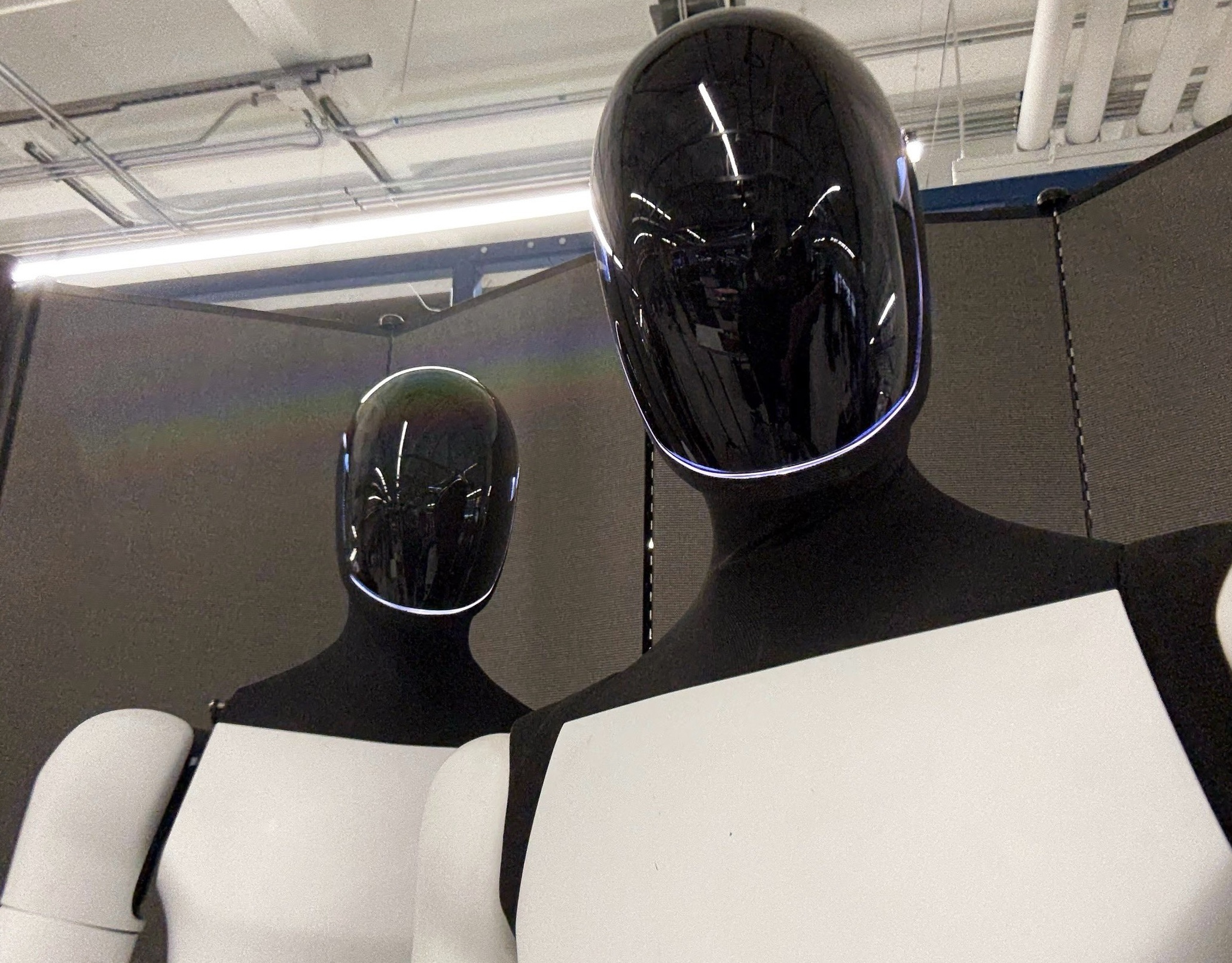
Cathie Wood shared that Tesla is her top stock pick. During Steven Bartlett’s podcast “The Diary Of A CEO,” the Ark Invest founder highlighted Tesla’s innovative edge, citing its convergence of robotics, energy storage, and AI.
“Because think about it. It is a convergence among three of our major platforms. So, robots, energy storage, AI,” Wood said of Tesla. She emphasized the company’s potential beyond its current offerings, particularly with its Optimus robots.
“And it’s not stopping with robotaxis; there’s a story beyond that with humanoid robots, and our $2,600 number has nothing for humanoid robots. We just thought it’d be an investment, period,” she added.
In June 2024, Ark Invest issued a $2,600 price target for Tesla, which Wood reaffirmed in a March Bloomberg interview, projecting the stock to reach this level within five years. She told Bartlett that Tesla’s Optimus robots would drive productivity gains and create new revenue streams.
Elon Musk echoed Wood’s optimism in a CNBC interview last month.
“We expect to have thousands of Optimus robots working in Tesla factories by the end of this year, beginning this fall. And we expect to scale Optimus up faster than any product, I think, in history to get to millions of units per year as soon as possible,” Musk said.
Tesla’s stock has faced volatility lately, hitting a peak closing price of $479 in December after President Donald Trump’s election win. However, Musk’s involvement with the White House DOGE office triggered protests and boycotts, contributing to a stock decline of over 40% from mid-December highs by March.
The volatility in Tesla stock alarmed investors, who urged Musk to refocus on the company. In a May earnings call, Musk responded, stating he would be “scaling down his involvement with DOGE to focus on Tesla.” Through it all, Cathie Wood and Ark Invest maintained their faith in Tesla. Wood, in particular, predicted that the “brand damage” Tesla experienced earlier this year would not be long term.
Despite recent fluctuations, Wood’s confidence in Tesla underscores its potential to redefine industries through AI and robotics. As Musk shifts his focus back to Tesla, the company’s advancements in Optimus and other innovations could drive it toward Wood’s ambitious $2,600 target, positioning Tesla as a leader in the evolving tech landscape.
-
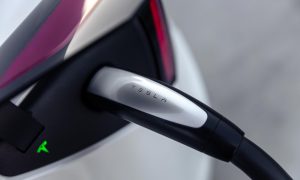
 News1 week ago
News1 week agoTesla to lose 64 Superchargers on New Jersey Turnpike in controversial decision
-
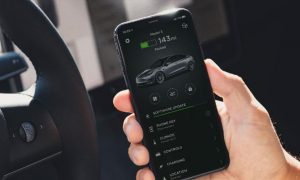
 News2 weeks ago
News2 weeks agoTesla gets major upgrade that Apple users will absolutely love
-
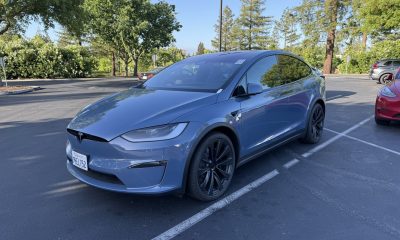
 News2 weeks ago
News2 weeks agoTesla teases new color while testing refreshed Model S, X
-
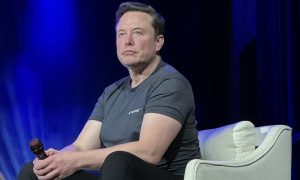
 Elon Musk2 weeks ago
Elon Musk2 weeks agoTesla investors demand 40-hour workweek from Elon Musk
-
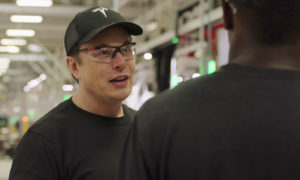
 Elon Musk6 days ago
Elon Musk6 days agoElon Musk explains Tesla’s domestic battery strategy
-
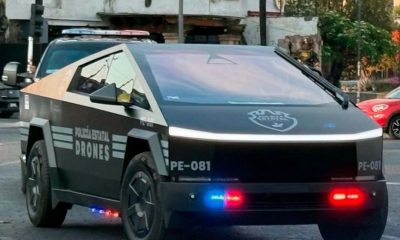
 News2 weeks ago
News2 weeks agoTesla Cybertrucks join Jalisco’s police fleet ahead of FIFA World Cup
-
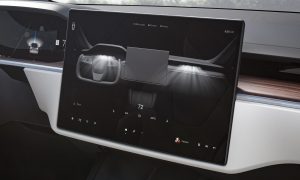
 News2 weeks ago
News2 weeks agoTesla rolls out new crucial safety feature aimed at saving children
-
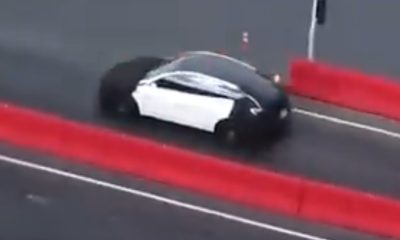
 News2 weeks ago
News2 weeks agoTesla’s apparent affordable model zips around Fremont test track


